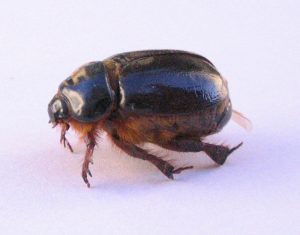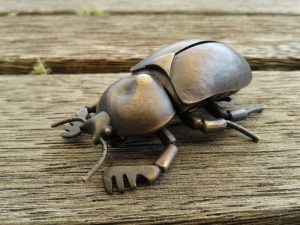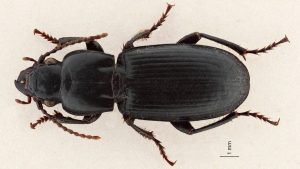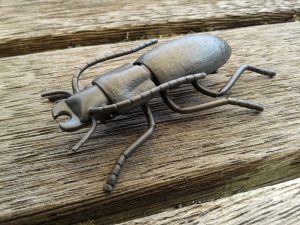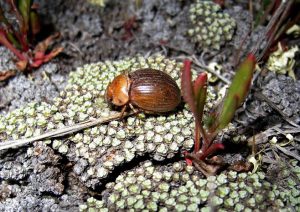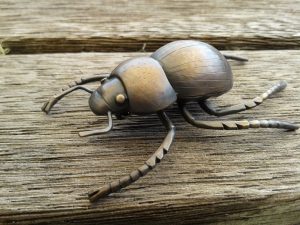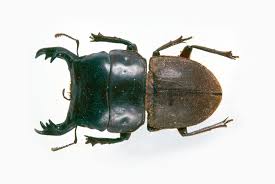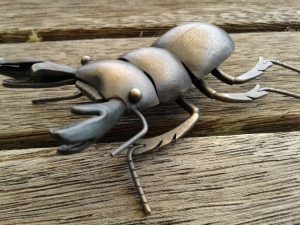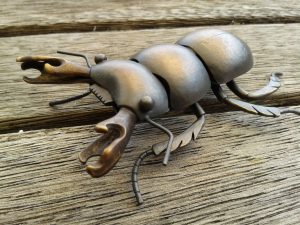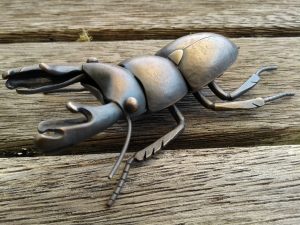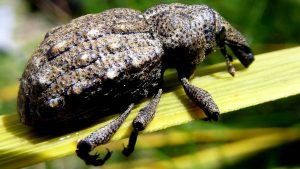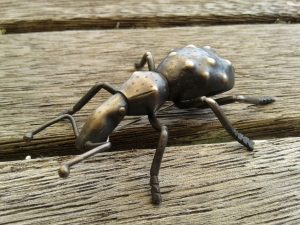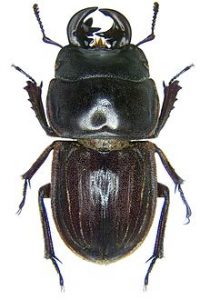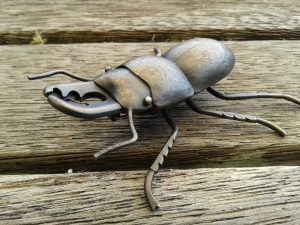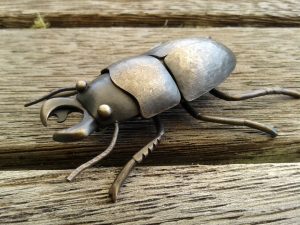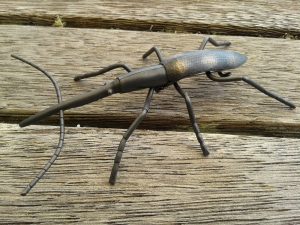Brachaspis robustus
The Robust Grasshopper lives only in the Mackenzie Basin in the South Island of New Zealand.
Absurdly endangered, predator proof fencing has been erected around it’s arid habitat in the hope of protecting it from it’s main predators, hedgehogs, stoats, and feral cats. It is also being raised in captivity.
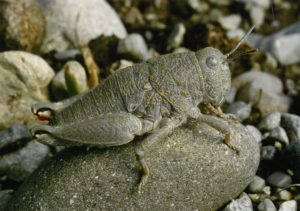
Photo credit, DoC
If you were to ask me, I would probably tell you it is my favourite insect. If we all had a favourite insect, they might be less likely to succumb to extinction. Alas, insects are the everyday invisible, the creatures that teem around you that you fail to notice till they are gone.
Brachaspis robustus is a handsome creature, armoured like a tank, with the physique to match. An image of the male mating the female is reminiscent of a Sherman tank with gun turret resplendently mounted, such is the sexual dimorphism between the sexes. The female is considerably larger, at 38 to 42 mm in length, the male about half her size.
Their wings are mere nubs unsuitable for flight, and they tend to freeze when spotted by a predator, so they rely on camouflage to save their exo-skeletons. They can adapt their colour to their environs, colours ranging from a rusty brown, through to gun-metal grey, and less commonly black.
The males can jump quite well, with the ability to jump up to 1.5m with frequency in warmer weather, but they are very poor at landing, and will often land badly, on their backs, or bellies, with a sorry thud. The bulky female is a poor jumper. None of these things add up to an especial ability to save themselves from predation.
There are maybe 600 robust grasshoppers, and they live about two years, so sucessful breeding without predation is vital to preserve the species. Egg-laying season is Summer through to Autumn, two clutches of eggs of 20 to 30 eggs a clutch. They seem to be able to cope with extremes of temperature, such is the harshness of their environment, and it’s likely their eggs require very cold temperatures to hatch, and the nymphs winter over before emerging as an adult in Summer. The adults are observed to be promiscuous copulaters.
They are herbivorous, feeding on various mosses, lichens and herbs found in the vicinity of their rocky drought-prone home, moisture and succulence being at a premium in their diets. Apparently they will happily devour a dandelion snack within minutes.
I feel cautiously hopeful for their survival knowing that a conservation project successfully raised $130k to erect a predator fence to protect them, and that Canterbury entomologist and conservationist Tara Murray has a team dedicated to their study and species continuation. Changing climate could present an inescapable problem however, if the eggs can no longer get the freezing conditions they need as a hatching signal.
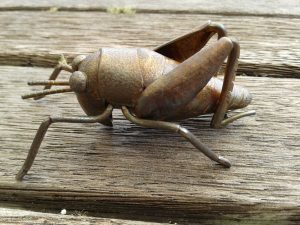
Silver brooch

